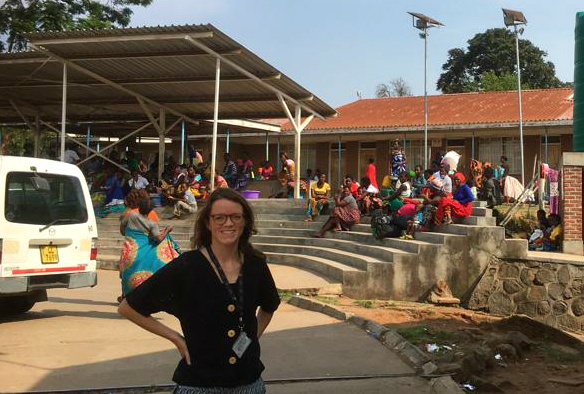Becoming an Expert: Improving drug treatment for a deadly brain infection
Published on

Dr Katharine Stott is a Wellcome Trust Clinical PhD Fellow at the University of Liverpool and is currently based in Blantyre, Malawi.
“Cryptococcal meningitis is the most common cause of meningitis in adults living with HIV and is responsible for 15% of HIV-related deaths globally. Despite this, there are limited treatment options available and we do not know whether we are using those that we do have optimally. Cryptococcus is a yeast that is ubiquitous in the environment; it can be found in trees or bird droppings, for example. People become infected with cryptococcus by inhaling spores of the yeast. If their immune system is weak, the yeast can disseminate throughout the body. Cryptococcus has a tendency to pass into the central nervous system, infecting and inflaming the brain and the coverings of the brain (called the meninges). Cryptococcal meningitis is universally fatal without treatment. Even with the best treatment available, the number of people who die from cryptococcal meningitis is unacceptably high - approximately a quarter of people die within 10 weeks of diagnosis.
My PhD examines potential reasons for these terrible statistics, by trying to understand what factors contribute to treatment outcome. For cryptococcal meningitis, the goal of treatment is to reduce the burden of yeast cells in the central nervous system. The extent to which a drug or a combination of drugs does that is the pharmacodynamics. I am looking at the pharmacodynamics of cryptococcal meningitis from three angles: firstly, how the body handles the drugs used to treat the infection (the pharmacokinetics); secondly, the host immune response, and finally, the biology of the pathogen itself.
For the past two years I have been based at the Malawi Liverpool Wellcome Trust Clinical Research Programme (MLW) in Malawi, in central Africa. The prevalence of HIV in Malawi is close to 10% and we see anything between 1 and 5 new cases of cryptococcal meningitis in the hospital where I work each week. I have been part of a team of nurses and doctors working on a clinical trial to test two different treatment strategies for cryptococcal meningitis. My PhD study is a substudy of this clinical trial. We enrol consenting adults to the study and take serial samples of blood and cerebrospinal fluid (CSF). For the pharmacokinetic part of the study we record the times of drug administration and blood/ CSF sampling meticulously so that we can get a profile of drug concentrations over time, in relation to when the patient took the drugs. We have been processing all samples in the lab here in Malawi and storing them in the freezer until they are ready to be analysed.
We are now preparing to ship some samples to the Antimicrobial Pharmacodynamics and Therapeutics (APT) lab, led by Professor William Hope at the University of Liverpool. Samples of blood and spinal fluid will undergo high performance liquid chromatography in the APT lab to measure drug levels for the pharmacokinetic analysis. Other samples will be shipped to Duke University in North Carolina in the USA, where I will work with collaborators to better understand the genetic and phenotypic characteristics of the strains of cryptococcus infecting patients. Here at the MLW laboratory in Malawi, we will also undertake analysis to look for immune signatures that may influence the pharmacodynamic response to treatment.
I hope that my PhD results will help us to understand why some people respond better than others to drug treatment for cryptococcal meningitis. This knowledge could contribute to the design of more successful treatment regimens for this deadly disease.”